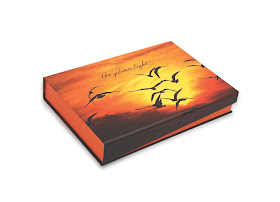Do you avoid making worked-in buttonholes by knitting only pullovers or zip-up cardigans? Buttonholes give many knitters pause, as they are a feature usually located on the front a garment: you want them to look their best and be done well. In this post, we aim to provide you with the information you need to build a better buttonhole!
Small Eyelet Buttonholes
Knitted buttonholes are best kept as small as possible as a knitted fabric will stretch to allow the button to pass through. There is no one formula to follow, so you can be flexible in your choice, keeping in mind the garment style, yarn used, and the size of the button.
Traditionally used on baby garments, the small eyelet buttonhole is appropriate anytime a small button is used. The eyelet makes a round opening so a button somewhat larger than the opening is required to stay in place. The technique involves a combination of a paired yarnover and decrease (for example, yo, ssk), similar to what you use in lace and mesh patterns.
If you need a slightly bigger buttonhole, try working a double yarnover by wrapping the yarn around the needle twice, and working an additional decrease to compensate (for example, k2tog, double yo, ssk). When you come to this double yarnover on the next working row, you will work k1, p1 (or p1, k1) into those stitches.
If you still need a much larger buttonhole, Ysolda Teague has an interesting technique she calls the One Row Buttonhole, which is an excellent choice to use when an eyelet buttonhole is not appropriate.
Reinforcing a Buttonhole
If a buttonhole is going to be subjected to hard wear, the yarn used for the garment is softly spun, or if the fabric is worked at a loose tension, the smart choice is the reinforce the buttonhole. Reinforcing the buttonhole will also stabilize the opening to avoid stretching out with wear. On occasion, a sewn finish can be used to camouflage an imperfect buttonhole, to correct one that is too large or stretched, or to add a decorative touch. Using the same yarn used for the garment will help the edge blend in.
The choice of stitch to reinforce a buttonhole is up to the knitter or crocheter. Shown above left is the buttonhole swatch before any reinforcement was completed. The buttonholes in the center are reinforced with (from top to bottom) an overcast stitch in a contrasting yarn, overcast stitch in with a ply of the yarn used, buttonhole stitch with a ply of the yarn used to knit the swatch, and the buttonhole stitch worked with a contrasting color. The top right photo shows a close up on the first two methods, the bottom right photo shows the second two methods.
Purchasing your buttons at the start of the project will help guide your choice of buttonhole to make! Before you cast on your project, take your swatch (you did make that swatch, right?) to the shop so you can see how the buttons look with your fabric.
Giveaway
One lucky blog reader will win a large Joy Hand Block Printed Fabric Bag. To enter, leave a comment on this post telling us what you’re knitting or crocheting this fall. Be sure to also mention your Ravelry ID or email address so that we can contact you if you win. We’ll randomly select one lucky winner to announce on our next blog post on Friday, November 10. Good luck!
Like this post? Pin it!








